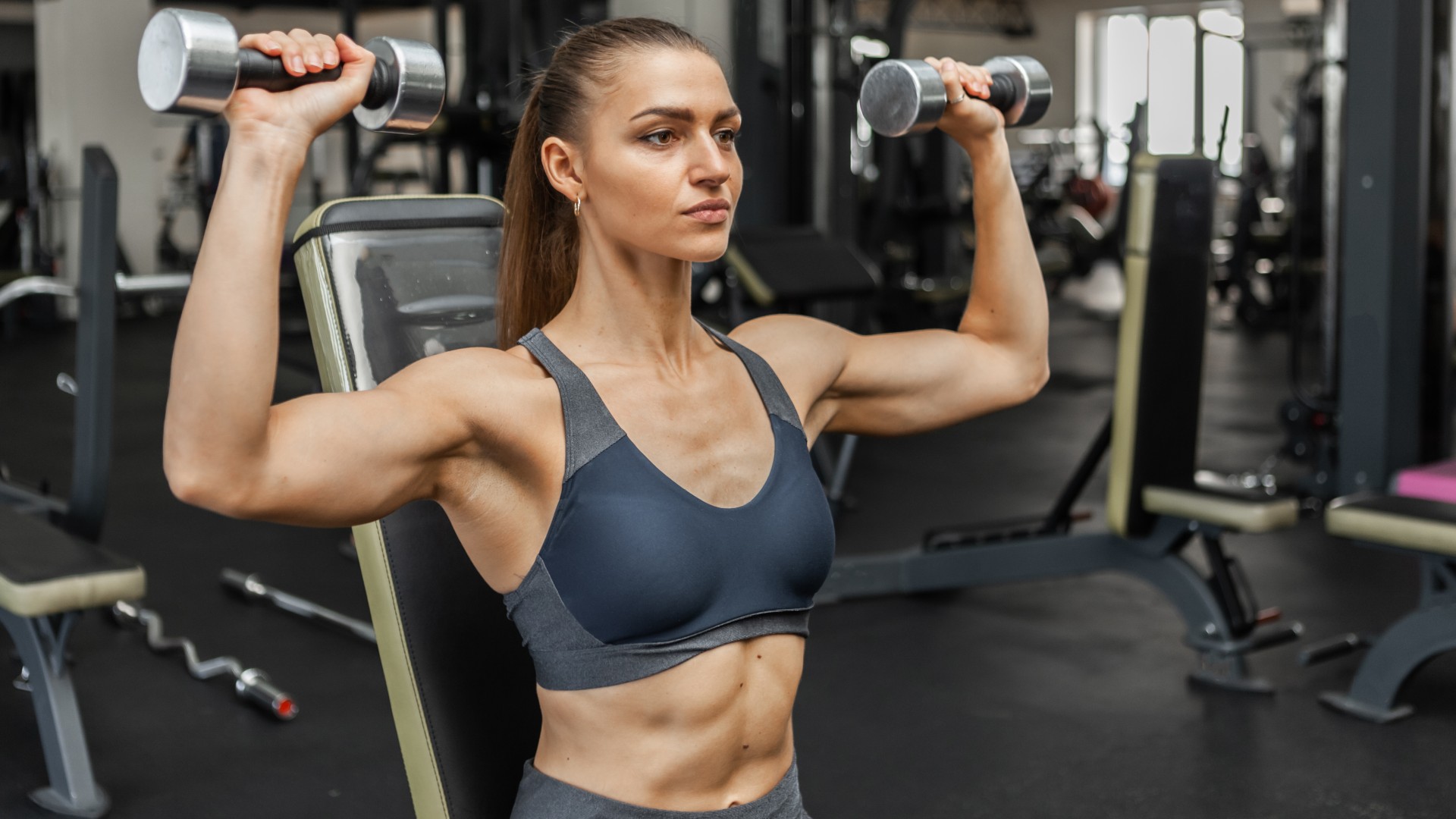
The kettlebell seesaw press is similar to an alternating overhead press, working the muscles unilaterally (one side at a time) through constant tension and recruiting your whole upper body.
Learning the press variation could build your chest, shoulders and triceps and develop thoracic strength, so here’s how to nail it the next time you hit the gym — or wherever you take your workouts.
We'll cover how to do the seesaw press, the benefits, some common mistakes, and variations to try. If you’re currently suffering from a shoulder injury, seek a medical opinion before beginning any new exercises or workout regimes and stop if you experience sharp or prolonged pain.
Once you're ready to go, grab a set of the best kettlebells (you’ll need two for this move), and give this shoulder-strengthening upper body exercise a try.
How to do the kettlebell seesaw press
You could use adjustable dumbbells or kettlebells for the seesaw press. Either way, it's a side press, so your arms will track wider without your biceps sitting close to your head. Keep your gaze ahead to support a neutral neck position.
- Stand with feet shoulder-width apart and rack your kettlebells to your shoulders
- Brace your core and keep your back straight without leaning forward or backward
- Press one kettlebell overhead, keeping your weight stacked over your shoulder, shoulder pulled down, and lats engaged
- As you lower the weight back to your shoulder, begin pressing the other kettlebell overhead so that you lock out at the top as the first weight reaches your shoulder
- Continue this way, ensuring neither weight stops moving at any time.
Benefits of the kettlebell seesaw press
The differences between a seesaw press and an alternating press are tension and arm position, and the seesaw press requires greater stabilization from your core and shoulder stabilizers (the rotator cuffs).
While performing the seesaw press, your deltoids remain under constant activation as you keep moving, removing the “racking” aspect of the press. Think about the overhead press or alternating overhead press; after each rep, you re-rack the weight at your shoulder and press from a racked position. One weight waits for the other to press upward, then return.
For this variation, as you move, think of a seesaw in your local park — one side goes up, the other goes down, and there’s a continuous back and forth. You’ll develop core stability and build thoracic strength as you press from a solid torso, also hitting the triceps, delts (lateral), upper chest, lats and upper traps. The seesaw press also requires core and shoulder stability to control the weights through continuous movement.
Common mistakes to avoid with the kettlebell seesaw press
Upper body form
Stand tall while you perform the seesaw exercise, and brace your stomach to keep your torso stable and tight. Commonly, people arch the lower back, stick the bum out, or overlean (forward, back, or sideways) during the reps; this could indicate that you’re attempting to lift too heavy.
Racking
Avoid racking the weight onto your shoulder and keeping it there. As you press one weight overhead, focus on lowering the other weight, switching immediately without rest so that the two weights pass each other around midway.
Programming
The temptation to go heavy during the seesaw press is natural, but try to load lighter and steadily build as you get stronger. Remember, your muscles are likely to tire faster than regular alternating overhead presses (which usually allow you to go heavier than the standard press), so go lighter or program fewer reps until you feel comfortable with the movement.
Most people find it easier to achieve more reps faster, as the move requires a speedier pace, but the perceived effort can also be higher, so be sure to experiment with what works for you.
Kettlebell seesaw press variations
Sitting or kneeling seesaw press

Try the seesaw press from a sitting, kneeling, or half-kneeling position. These variations remove the legs from the equation, which prevents the body from picking up “cheats” like using your legs to generate momentum.
Sitting or kneeling can feel like harder work, but standing recruits more muscles, including greater core stabilization, in most cases. Beginners can support the back against a bench to reduce the workload on the core muscles, but otherwise, try to kneel or sit without external back support; this teaches your core muscles to recruit properly to help keep you stable.
Overhead press

Why not try the overhead press if you fancy lifting both weights together? You’ll press both weights overhead simultaneously, then re-rack at the shoulders between reps. Dual overhead presses can feel more intense, so you may need to reduce the weights slightly while doubling the workload on the body.
Alternating press
As we mentioned, the alternating press looks similar and packs similar benefits, but you’ll work one side at a time, pressing and re-racking on one side before moving to the other arm.
Move explosively and keep your torso tight and back protected while controlling the weights as you lift and lower them. Practice a full range of motion by extending the arm as you punch the weight upward, then lowering the bell to your shoulder again.







